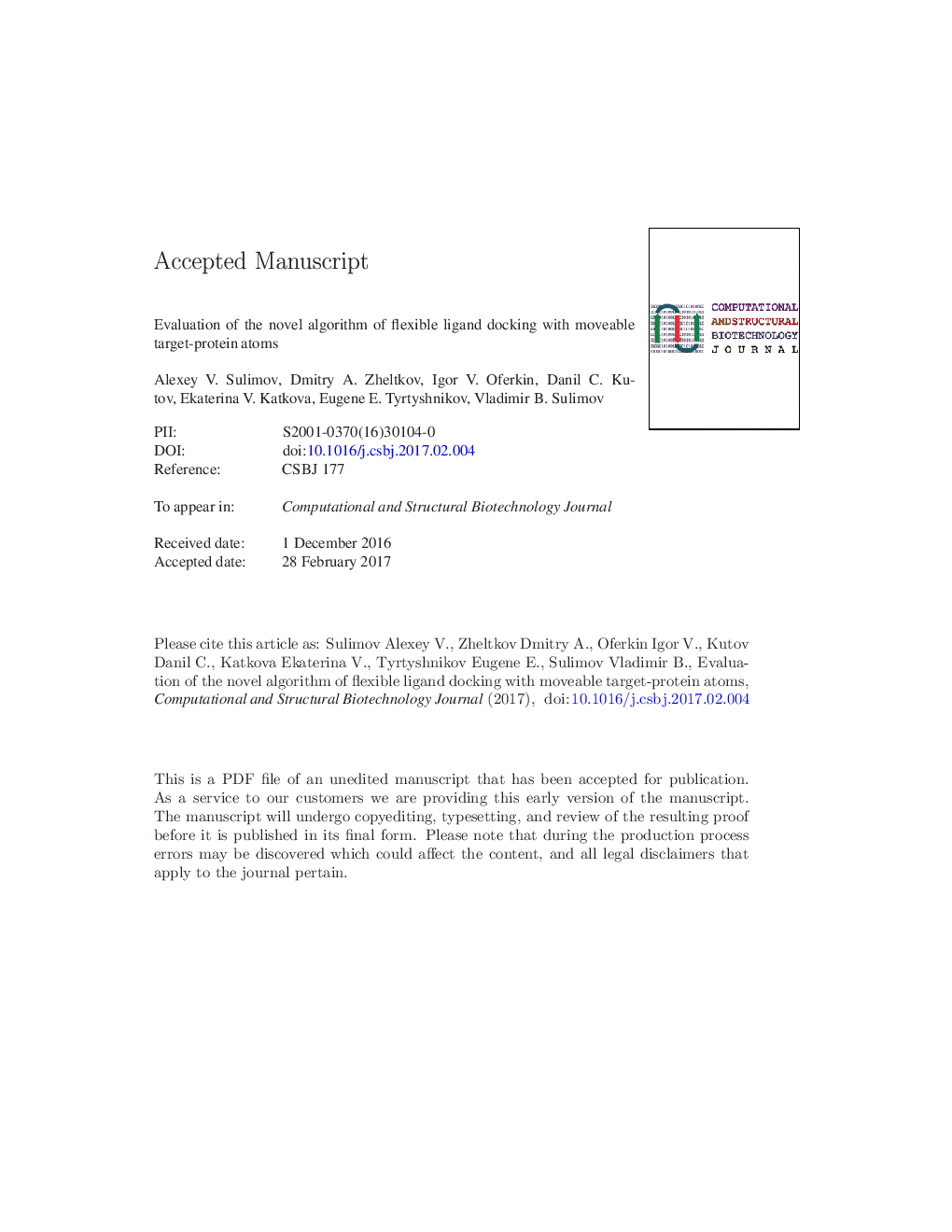| Article ID | Journal | Published Year | Pages | File Type |
|---|---|---|---|---|
| 8408388 | Computational and Structural Biotechnology Journal | 2017 | 22 Pages |
Abstract
We present the novel docking algorithm based on the Tensor Train decomposition and the TT-Cross global optimization. The algorithm is applied to the docking problem with flexible ligand and moveable protein atoms. The energy of the protein-ligand complex is calculated in the frame of the MMFF94 force field in vacuum. The grid of precalculated energy potentials of probe ligand atoms in the field of the target protein atoms is not used. The energy of the protein-ligand complex for any given configuration is computed directly with the MMFF94 force field without any fitting parameters. The conformation space of the system coordinates is formed by translations and rotations of the ligand as a whole, by the ligand torsions and also by Cartesian coordinates of the selected target protein atoms. Mobility of protein and ligand atoms is taken into account in the docking process simultaneously and equally. The algorithm is realized in the novel parallel docking SOL-P program and results of its performance for a set of 30 protein-ligand complexes are presented. Dependence of the docking positioning accuracy is investigated as a function of parameters of the docking algorithm and the number of protein moveable atoms. It is shown that mobility of the protein atoms improves docking positioning accuracy. The SOL-P program is able to perform docking of a flexible ligand into the active site of the target protein with several dozens of protein moveable atoms: the native crystallized ligand pose is correctly found as the global energy minimum in the search space with 157 dimensions using 4700 CPU â h at the Lomonosov supercomputer.
Related Topics
Life Sciences
Biochemistry, Genetics and Molecular Biology
Biotechnology
Authors
Alexey V. Sulimov, Dmitry A. Zheltkov, Igor V. Oferkin, Danil C. Kutov, Ekaterina V. Katkova, Eugene E. Tyrtyshnikov, Vladimir B. Sulimov,
